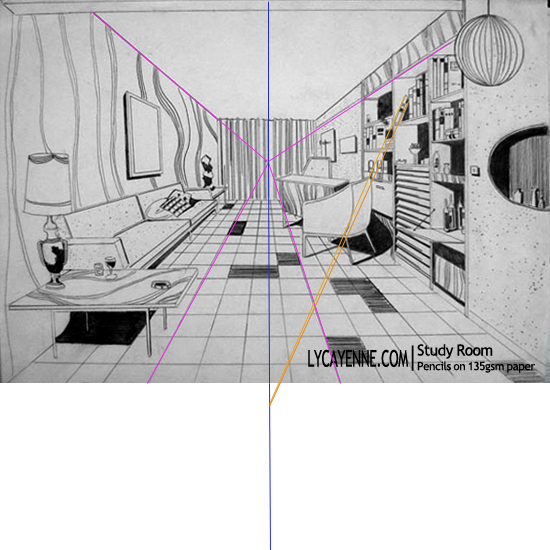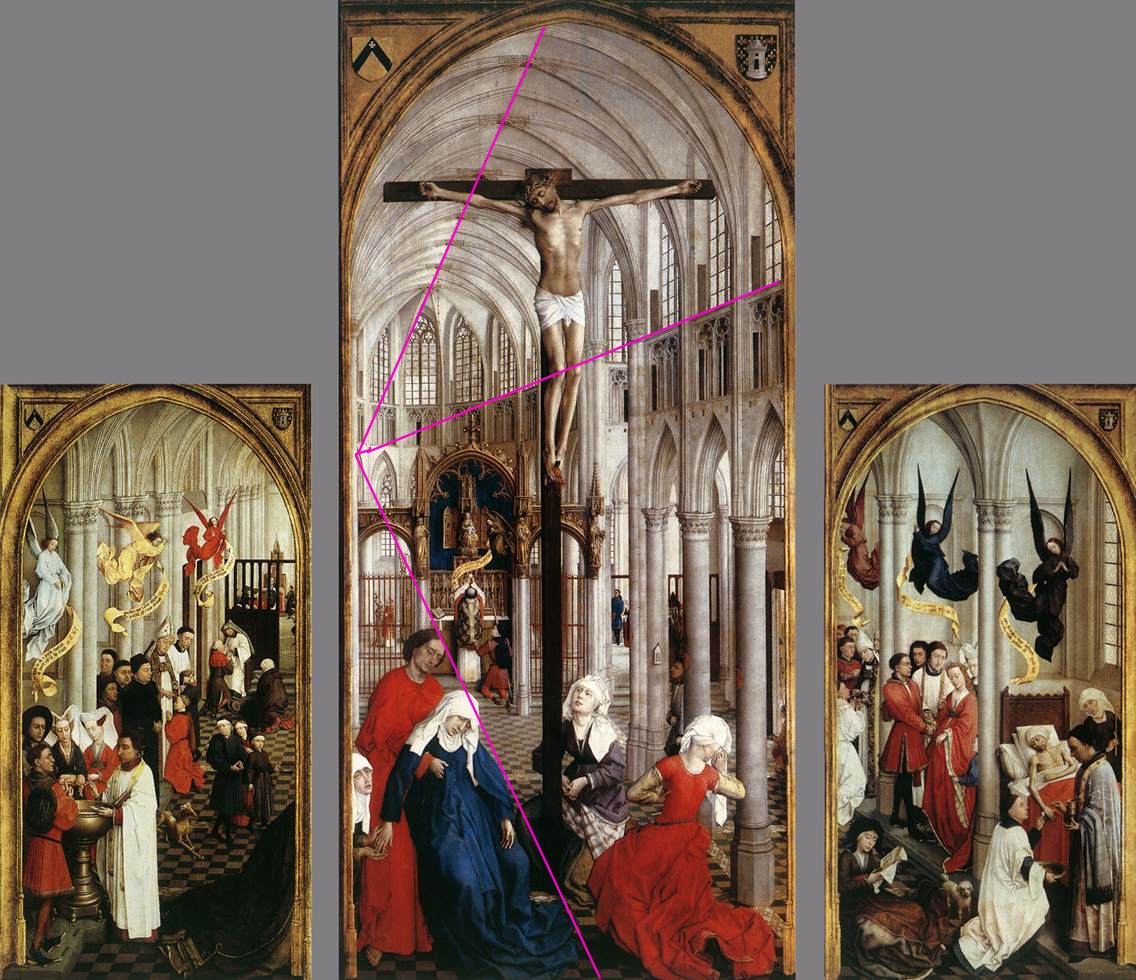
The vanishing point of all the orthogonals is called the primary vanishing point.
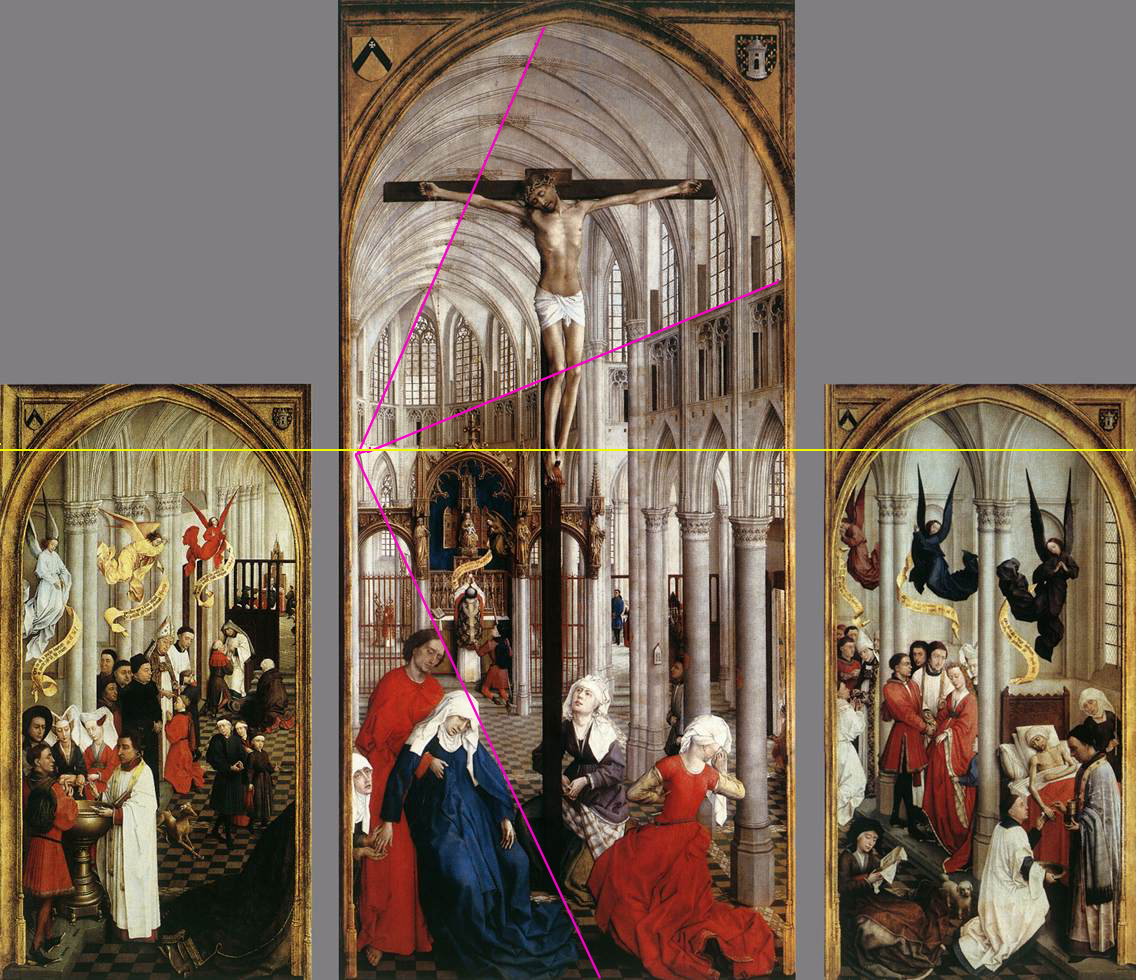
Since the primary vanishing point is at the origin, the horizon line corresponds to the x-axis.
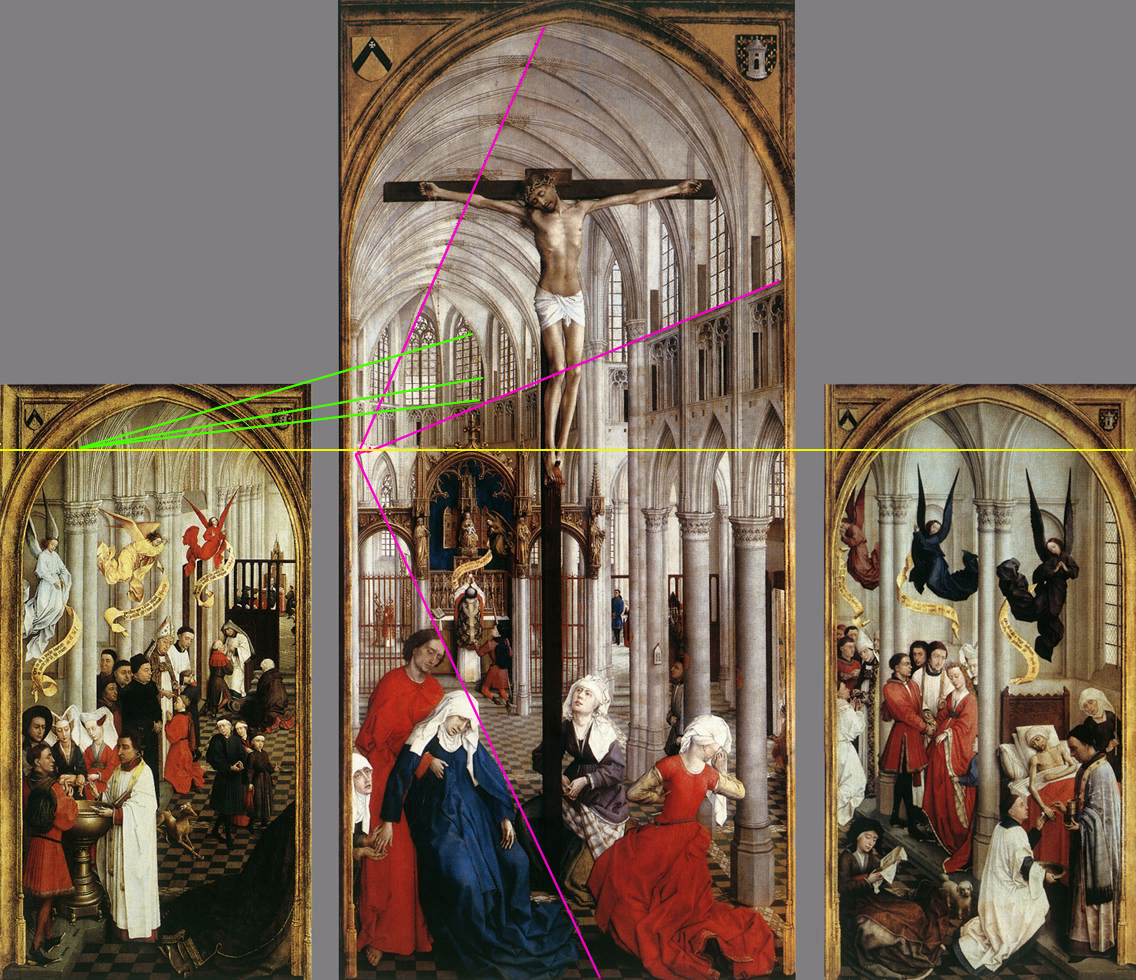
This is because if the viewer's line of sight is parallel to the line we're looking at, the it's parallel to the xz-plane. Since the line of sight begins in the xz-plane (the viewer's eye is on the z-axis), it must stay in the xz-plane. Thus it must hit the picture plane on the x-axis somewhere.
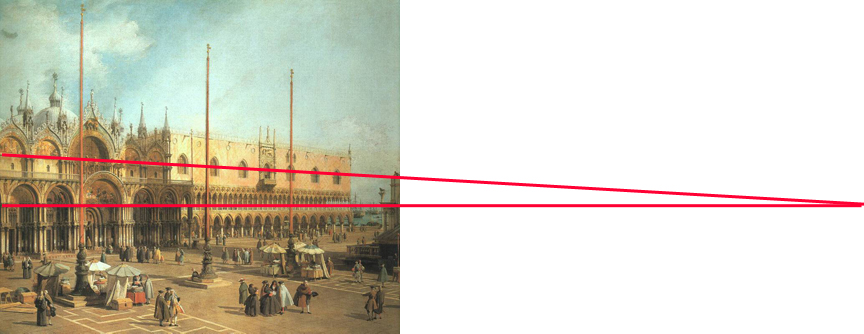
In the painting on the left, we know all of the highlighted lines are parallel to the "floor" (the xz-plane), and thus we still know they vanish on the horizon line, as we did above, even though this painting is not in one-point perspective and so we don't have a primary vanishing point. Thus a viewer can at least figure out at what level their eye should be, even if they can't tell opposite which point exactly to put their eye.
